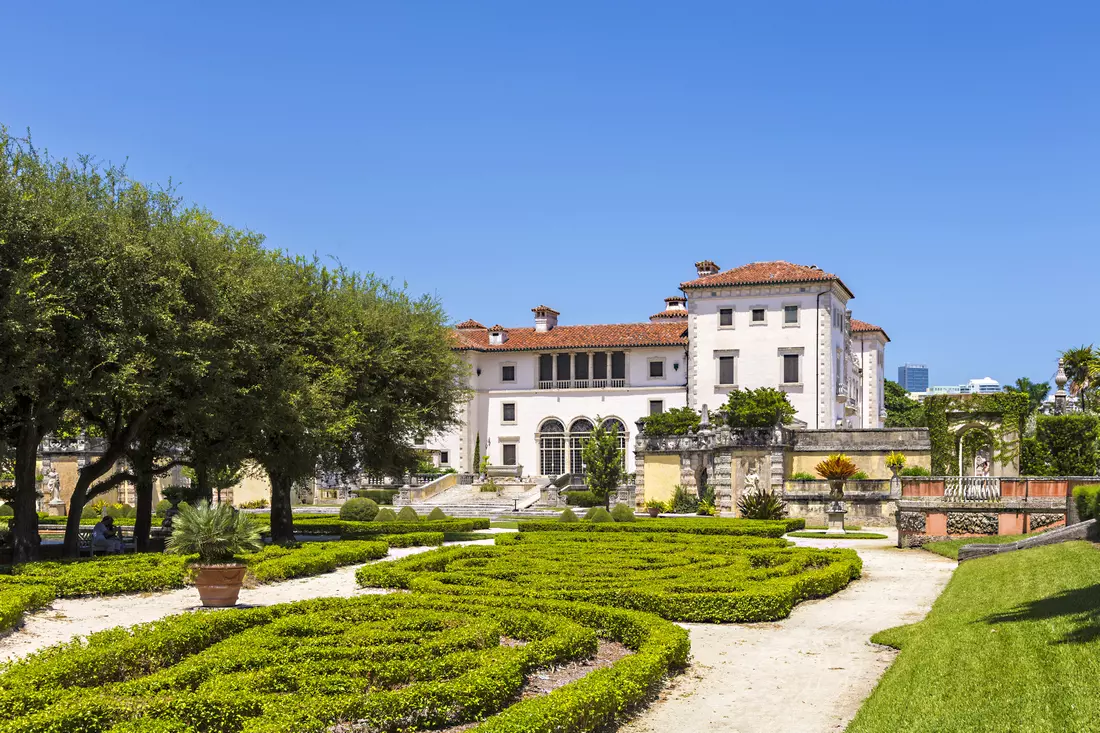In a world of technology and social networks, where the newest gadgets become outdated faster than we can get used to them, where smart homes control the lighting and neural networks write novels — there are people for whom all this is not just unnecessary, but deeply alien. People who not only refuse to use smartphones — they don’t even acknowledge electricity. They live in the USA, yet seem to have stayed in the 19th century. And they do this consciously.
These are the Amish.
Perhaps you have heard of this mysterious community from movies or news stories. You may have seen men in hats with neatly trimmed beards, women in modest dresses, children running barefoot across the fields. Their homes — without electric outlets. Their transportation — horse-drawn buggies. Their faith — strict but sincere. Their values — family, labor, modesty, obedience, and inner purity. They live as their great-grandparents did, and it is in this that they find peace and meaning.
What makes people of the 21st century give up electricity, cars, credit cards, and the internet? Why do they reject medicine, technology, schooling beyond the eighth grade, and all the charms of consumer capitalism? How can one exist in the heart of the most progressive country in the world — yet remain almost invisible, not participating in elections, social media, or the bustling life of megacities?
And most importantly — who gave them the right to be happy in such an outdated and seemingly "obsolete" way of life?
This article is not a sensation or an accusation. We will not ridicule other traditions or scare with mysticism. We will try to understand: who are the Amish really? Is it possible to visit them? Why do they not pick up phones, but know how to build houses without a single nail? Why do they reject fashion, yet live in strong marriages lasting 60 years?
We will look into Amish villages, explore their everyday life, rules, faith, and contradictions. Without myths — but with interest, respect, and an attempt to look a little deeper into these "people out of time".
Perhaps in their simplicity we will find what is so lacking in our modern world.
The Amish do not consider themselves “hermits.” They are not running away from the world, but simply choosing a different way of living. They have no desire to “fix” the rest of the world — rather, they try not to be “infected” by it. They are not missionaries, activists, or critics of modern civilization — they are a community that has chosen inner integrity.

"If everyone lived like the Amish, there would be no wars or banking crises in the world — only fields, children, and horses." — Mark Twain
Who Are the Amish: A Brief Historical Overview
The Amish are not just peculiar people dressed in old-fashioned clothes, but representatives of a deeply rooted religious tradition. Their history begins in Europe at a time when the word "dissent" often meant a death sentence.
The origins of the movement trace back to the Protestant Reformation of the 16th century. It was then that the radical wing of the Anabaptists emerged — people who advocated for conscious baptism in adulthood, personal faith, and rejection of violence. They opposed infant baptism, church hierarchy, state interference in spiritual matters, and any form of violence — even in self-defense. This was too radical even for contemporary Protestants. Anabaptists were persecuted by Catholics, Lutherans, Calvinists — all who considered them a threat to order.
16th Century: Origins of Anabaptism and the Beginning of the Journey
To understand who the Amish are, one must return to the turbulent 16th century — an era when church and state were one, and religious dissenters were burned at the stake. It was during the wave of Protestant Reformation in Europe that many religious movements emerged, seeking a return to "pure faith." One of these movements was the Anabaptists — the predecessors of the Amish.
Anabaptists rejected infant baptism (believing that conscious faith is only possible in adulthood), the state church, and all violence. They dreamed of returning to the life of the early apostles: community, mutual aid, humility. But in a society where religion meant political loyalty, they became enemies of all authorities. They were brutally persecuted by both Catholics and Protestants. Thousands were executed, drowned, or exiled.
Historical note: In 1527 in Switzerland, Anabaptist Felix Manz was executed for refusing to baptize infants — he was drowned in the Limmat River. This "irony of fate" became a symbol of Anabaptist suffering.
Some Anabaptists gradually became more moderate. Thus emerged the Mennonites — followers of Menno Simons, a Dutch theologian. They renounced extremes and made certain compromises with the surrounding world. But not everyone agreed with this.
In 1693, Jacob Amman, a strict Anabaptist from Alsace (a region shifting between France and Germany at the time), declared that the Mennonites had lost spiritual rigor. He was particularly outraged by:
- The rejection of church discipline;
- "Worldly" behavior (fashion, entertainment);
- Weak discipline within communities.
He proposed a radical path — strict adherence to Scripture, rejection of secular culture, mandatory shunning of offenders (“shunning”), modesty in dress and lifestyle.
This is how the Amish movement was born — named after Amman. They split from the Mennonites over fundamental issues. While Mennonites accepted some adaptation, the Amish sought isolation.
18th Century: Flight from Persecution and the Beginning of a New Life in America
The Amish found no peace in Europe for a long time. Switzerland, Germany, Alsace — religious minorities everywhere were under suspicion. They were required to swear oaths, serve in the military, pay church taxes, and participate in elections. All of this contradicted their faith. Many Amish were fined, imprisoned, and deprived of property.
They began seeking lands where they could live in peace.
Such an opportunity was Pennsylvania — a colony founded by Quakers that guaranteed freedom of religion. The first organized Amish migration to America occurred in 1727. Emigration continued for decades.
The conditions were tough — settlers lost loved ones on the journey, fell ill, and had to start from scratch. But here, on free land, they could finally live by their own rules.
In the 19th century, industrialization, railroad construction, and urban development began in the U.S. Everything was changing rapidly. The Amish faced a choice: adapt or maintain isolation?
It was during this period that a split occurred between the "Old Order" and the "New Order" Amish. Some allowed the use of technologies (like tractors), secular education, and participation in elections. Others insisted on complete separation from the world.
Ultimately, the traditionalists formed what today is called the Old Order Amish — the very ones we picture when seeing images of horse-drawn buggies and lanterns. Those who allowed changes moved closer to the Mennonites or formed separate communities.
The Amish do not reject progress — they simply assess whether it will destroy the community. For example, in the 19th century, they accepted bicycles but rejected telephones. Later, they accepted gas stoves but refused electricity. Not because technology is “sinful,” but because it can disrupt interdependence and communal harmony.
20th Century: Growth in Numbers and Cultural Invisibility
Although the Amish do not participate in government life, do not serve in the army, and do not receive pensions, they have become one of the fastest-growing communities in the U.S. Their population doubles every 20 years due to high birth rates (on average, 6-8 children per family) and a stable internal order.
Amish culture has become an object of interest for tourists, researchers, and journalists. Their way of life inspires admiration, criticism, and bewilderment. Especially after the release of the Hollywood film "Witness" (1985), starring Harrison Ford as a policeman hiding in an Amish community. Since then, tourist visits to Lancaster and other “Amish lands” have sharply increased.
But the Amish themselves keep their distance. They have no televisions, social networks, or bank cards. They rarely engage in court cases and resist outside influence. Their attitude toward the world remains unchanged: “We are not against you. We are just not you.”
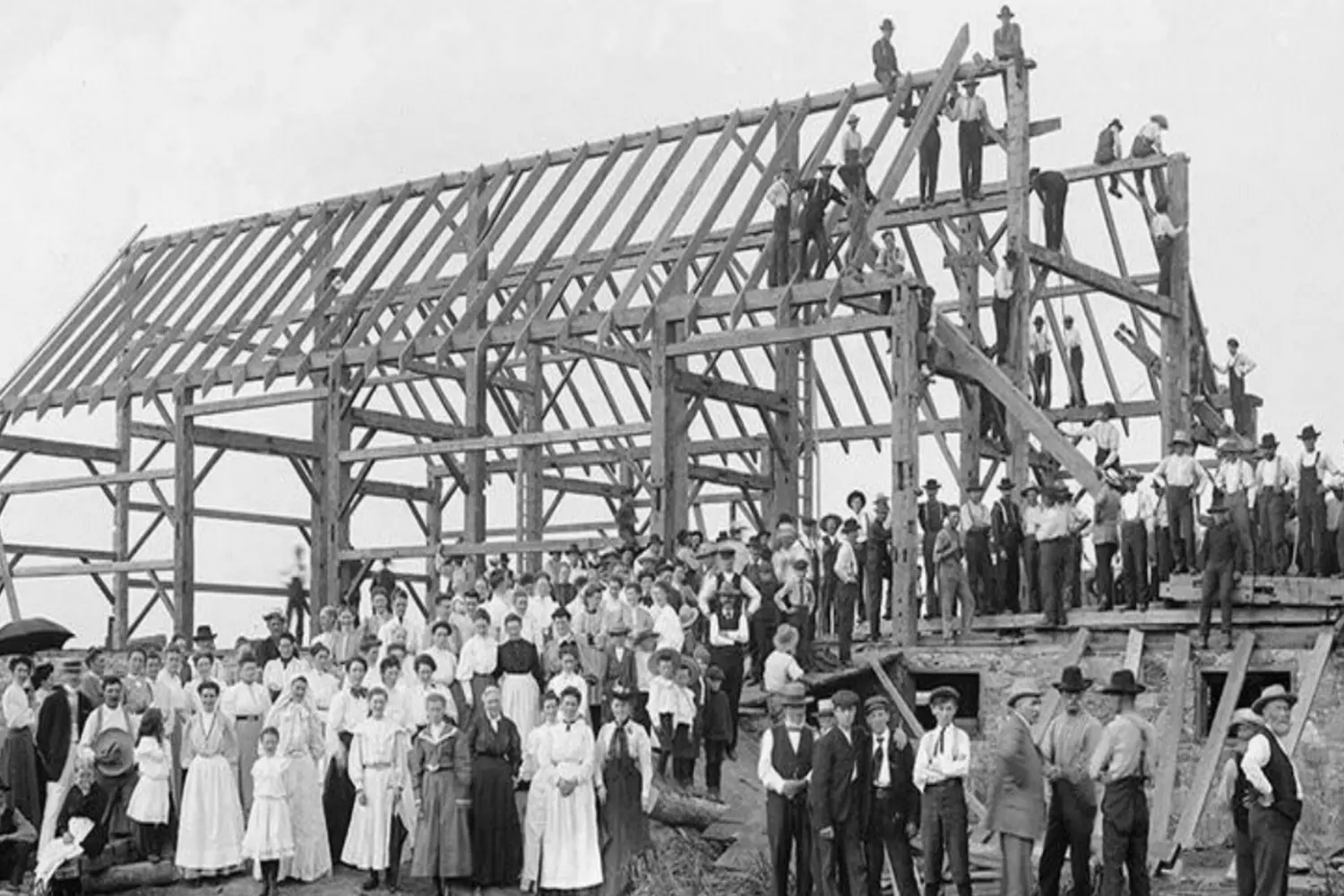
Faith in Simplicity: Amish Religion as a Way of Life, Not Just a Doctrine
When you hear the word "religion," you might picture church services, canonical texts, strict hierarchies, and loud sermons. But for the Amish, it’s different. Their faith is not a loud slogan, but a quiet, daily work on oneself. It is a life lived modestly, in accordance with God's will, without unnecessary words.
The Amish are Anabaptists, meaning they reject infant baptism and believe a person must consciously accept the faith as an adult. They are usually baptized between 18 and 22 years old, after which they become full members of the community. This is not just a spiritual ritual but a conscious choice — a kind of point of no return. By accepting baptism, you promise to follow the path of simplicity, modesty, and humility.
The Amish believe that true faith is shown not in theory but in everyday practice — caring for others, honest work, rejection of pride. It is almost a literal following of the New Testament:
"Do not love the world or anything in the world... For everything in the world—the lust of the flesh, the lust of the eyes, and the pride of life—comes not from the Father" (1 John 2:15–16).
They live by this principle. They don’t just read it — they live it.
- The Amish have no dogmas like Catholics, no centralized hierarchy like the Orthodox. Their religious life is governed by the "Ordnung" — a sort of unwritten code of rules regulating everything: from dress length to button shapes, from beard styles to types of farming equipment.
- Each community composes its own Ordnung. It can vary, but the general idea is the same: restrictions are necessary to curb the ego and maintain harmony. A simple example: if tractors are allowed, then in ten years young people will start buying motorcycles. Then cars. Then smartphones. And TikTok won’t be far behind. Although the Ordnung is never written down, breaking it can cost a person their membership in the community.
- The Amish have no churches as commonly understood. Services are held in the homes of community members, twice a month, lasting about 3 hours. They gather early in the morning, men and women sit separately. The pastor speaks quietly, without microphones or emotion — there is no performance here, only humility and prayer.
- Music is only vocal, without instruments. They sing old German hymns, stretching syllables for five seconds or more — slowly, almost like mantras. It sounds like the ancient, deep voice of time.
Interesting fact: the most popular song during Amish services is “Lob Lied” (“Song of Praise”) — it has remained unchanged since the 17th century and lasts about 20 minutes.
The entire church service is conducted in an archaic German dialect called Pennsylvania Dutch. It is a mixture of Middle High German, English, and Swiss dialects. In everyday life, the Amish speak it more often than English.
- 01. The Amish do not divide life into "secular" and "sacred." For them, every action can be an act of faith: baking bread, plowing the field, repairing the roof. All is done with prayer and gratitude to God. To work means to serve.
- 02. Every home has a Bible. But it is read not for show, but for inner growth. Prayers are simple, without pompous phrases. The main thing is sincerity.
- 03. Children learn not only reading and arithmetic but also humility, responsibility, and modesty. Amish schools are their own, up to the eighth grade, without physics or chemistry, but with practical knowledge: farming, carpentry, sewing, cooking. In their view, knowledge without morality is empty space.
Test of Faith: Excommunication as an Act of Love
The most difficult aspect of religious life among the Amish is the practice of "Meidung", or church shunning. If someone breaks the rules (for example, buys a car, refuses to attend services, or leaves the community), they can be "shunned." This is not punishment in the usual sense. It is a community protection mechanism. Communication with the shunned person is limited, even by relatives. They are not invited to the table, nor do people ride with them in the same buggy.
But the goal is not exclusion, but to encourage repentance and return. Many do return. Some do not. It is their choice. But for the Amish, honesty before God is more important than severity.
The Amish do not participate in elections, do not join the army, do not litigate. They are pacifists by conviction. Their faith forbids them to raise a hand even in self-defense. Instead of revenge — forgiveness. Instead of demonstrations — prayer. In 2006, in Pennsylvania, a man entered an Amish school and shot five girls. The community not only forgave the killer but also attended his funeral. Moreover, they helped his widow and children.
“Forgiveness is not weakness. It is what Jesus taught” — from a letter written by the elders of the Nickel Mines community after the tragedy.

Old Order, "Progressives," and "Caught in Between": Understanding the Inner World of the Amish
When we say "Amish," a single image immediately comes to mind: horse-drawn carriages, beards, straw hats, silent women in modest dresses, and houses without electrical outlets. But in reality, the Amish world is much more complex than it seems. It is not a monolithic group but a whole system of internal branches, where the differences are like those between a vintage bicycle and an electric scooter. And here, we’re not talking about technology, but about approaches to life, faith, and the surrounding world.
- 01. Old Order Amish: Keepers of the Past
Old Order Amish are exactly who you picture when you hear the word "Amish." They are the most traditional, the most closed-off, and the most devoted to the letter of the Ordnung.
- Rejection of all modern technologies
No electricity, no phones, no cars, not even lawnmowers. - Travel only by horse-drawn carriages.
- Strictly regulated clothing
Men wear black suits and hats, women wear long dresses and bonnets. Everything is handmade. - Education
Up to 8th grade, in one-room schools. - Minimal contact with the outside world
Except for business related to farming or crafts.
The Old Order Amish believe that progress is dangerous because it leads to pride, dependence, and loss of faith. For them, simplicity is not an aesthetic but a form of spiritual discipline.
- 02. New Order Amish: Between Tradition and Adaptation
New Order Amish appeared in the 1960s–70s as an attempt to balance tradition with modern realities. They remain Amish but have opened a window to the world, albeit slightly ajar.
- Technology is allowed but limited
Electricity in the home is still prohibited, but generators and mobile phones are permitted (usually outside the home). - Some families may travel by car
Although they often use drivers from the "outside world." - Clothing is modest
But less strictly regulated — colors, modern cuts, glasses, and even jewelry are allowed. - Education is more important
Than for the Old Order Amish: children may study longer, sometimes even in colleges. - Faith is "softer"
More emphasis on personal relationships with God, less on rigid external restrictions.
New Order Amish often participate in charity, go on missionary trips, and even publish their writings in English — something Old Order Amish never do.
- 03. Swartzentruber Amish: The Radical Sect
If the Old Order Amish are conservatives, then the Swartzentruber Amish are ultra-orthodox. They broke away even from the Old Order when they felt they had become "too soft."
- Strictly forbidden
Headlights on carriages, mirrors, scented soap, soft seats, spring seats. - Rejection of most safety measures
Even reflective signs on carriages. - Minimal interaction with the outside world.
- Homes even more primitive than other Amish.
They live as if time stopped in the 1700s. Their Ordnung is the strictest. But the level of community cohesion is phenomenally high.
- 04. Beachy Amish and Amish-Mennonites: The "Borderline" Groups
On the other end of the spectrum are the "secular Amish" — those who have kept their roots but greatly simplified their lifestyle.
- They drive cars
Use the internet, work in offices. - Modern but modest clothing.
- Churches resemble Protestant temples
Services are conducted in English. - Strong missionary activity
Including international trips. - They often call themselves Amish-Mennonites because they return to Mennonite (softer) roots.
Beachy Amish often face criticism from other branches, especially Old Order Amish, who say they "sold out to the world." But for them, what matters is not the form, but the essence of faith.
Interesting fact: In Kentucky, there is a farm run by a Beachy Amish community where all work processes are automated — but every morning starts with a prayer, and the business donates part of its income to a fund supporting traditional Amish.
Why is it so complicated?
Because the Amish are not a church but a communal movement. They have no central authority, patriarch, or Synod. Each community is like an independent republic and decides its own path. The divisions are not schisms but a natural evolution of communities in different conditions: some live closer to cities, some in remote countryside; some fear modernization, others use it as a survival tool.
Interesting fact: In Lancaster County, Pennsylvania, Old Order Amish carriages are equipped with reflectors and orange safety triangles — this is the only "technical innovation" they have agreed to accept, and even then, not immediately.
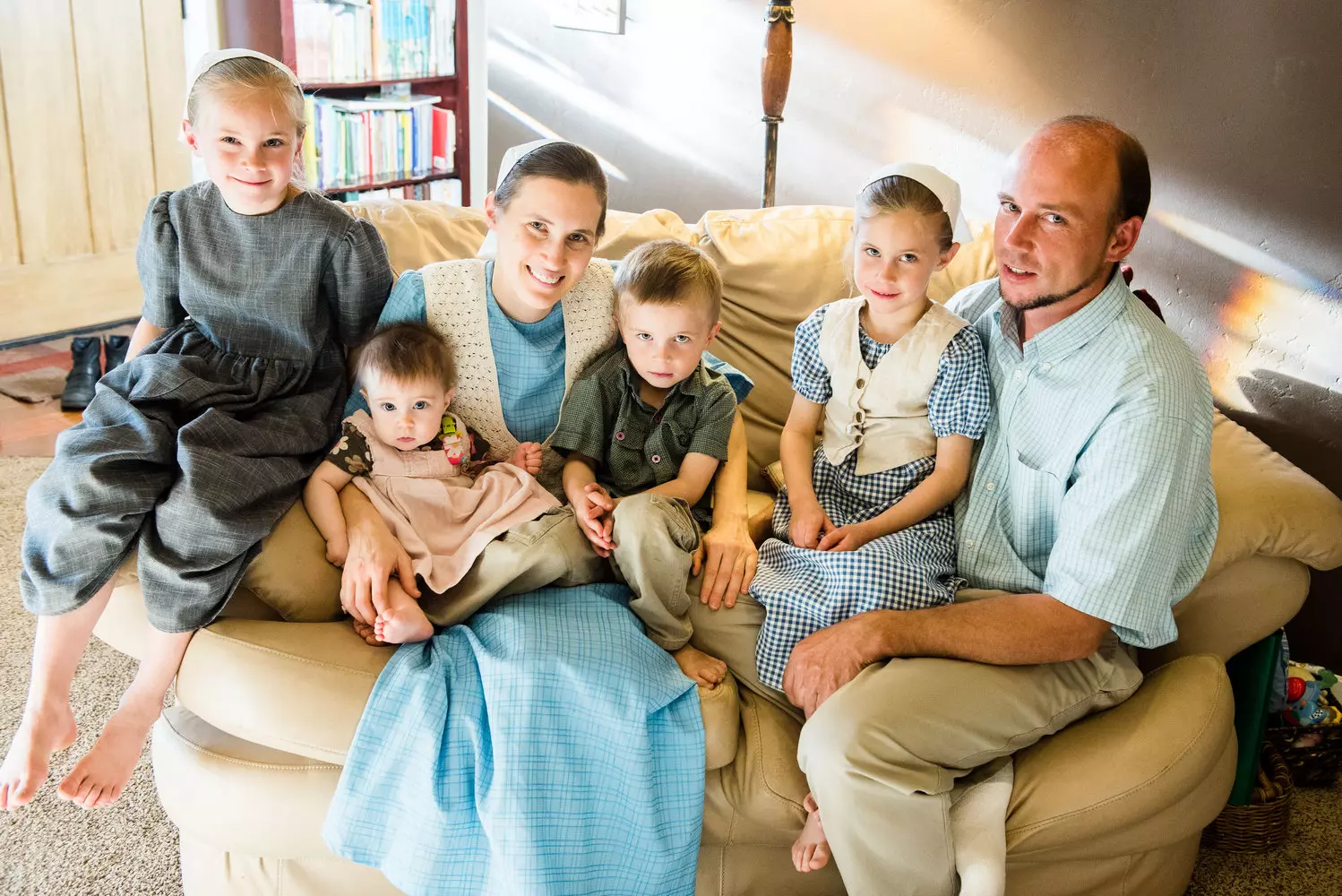
"Live Simply, Think Deeply": The Lifestyle and Culture of the Amish
If you think life without a phone is stressful, and a week without Netflix is a tragedy, the Amish might offer you an alternative. They are not just people in straw hats and ankle-length dresses — they represent a whole world where everything is governed by harmony, tradition, and silence. A world where family, community, work, and faith come first.
- 01. Simple living as a mindset
The Amish run their farms like in the 19th century. They plow fields with horses, milk cows by hand, and do not use electricity. Instead of cars — black horse-drawn buggies. Instead of phones — a conversation with a neighbor at the kitchen table.
But this is not rejecting progress for the sake of rejection. It is a principled decision: technology must not interfere with spiritual life or break bonds within the community. For example:
- There will never be a TV in the house.
- A phone may only be kept in an outbuilding — and only for emergency calls.
- There is no electricity, but kerosene lamps and generators are allowed — in rare cases, for example, for work in a woodworking shop.
- 02. Clothing: modesty instead of fashion
Amish clothing is not a costume for a photo shoot, but a reflection of their ideology. Everything is handmade and must be as simple as possible:
- Men wear dark pants, collarless shirts, vests, and straw hats. After marriage, they grow beards.
- Women wear solid-color dresses with aprons, bonnets, and no jewelry. No buttons or zippers — only pins.
This appearance symbolizes a rejection of vanity and individualism. Here, being like everyone else is an honor, not a problem.
- 03. Family and community — the heart of the culture
The family is the main unit of Amish society. Usually, a couple has 6–10 children, all raised to work from an early age.
Every Sunday, families gather for home worship, which can last 3–4 hours, with hymns sung in Pennsylvania Dutch. There are no churches — prayers take place in homes.
The community supports everyone: they build houses together, harvest crops as a village, and care for the elderly. The Amish have no pensions or health insurance — everything is compensated through mutual aid. - 04. Education: strictly up to eighth grade
Amish education ends at the elementary school level. Their children attend separate one-room schools, where the core subjects are taught: reading, writing, arithmetic, history, and Bible basics.
After eighth grade, teenagers enter the workforce. The reason is simple — further education can develop ambitions and individualism, which harm community harmony. - 05. Amish arts and leisure
Evenings are family time. No TV means there is time for live conversation, Bible reading, handicrafts, or farm work. The Amish have music, but only vocal — no instruments.
Dancing, gambling, and competitive sports are strictly forbidden. However, horse-drawn buggy rides, hikes, games like baseball within the community, and quiet family picnics are allowed.
Despite their external isolation, the Amish are excellent entrepreneurs. Many own successful farms, bakeries, furniture, and craft workshops. Their products are valued for quality, and their approach for honesty. Some Amish even do business with "English" (as they call non-Amish), but strictly within community rules.
This world may seem archaic. But try to look deeper. Behind the rejection of modern conveniences lies not backwardness, but a philosophy: the less unnecessary, the more genuine. Less noise — more meaning.

How Many Are They Really: The Population and Ethnic Composition of the Amish
The Amish are not a disappearing minority, as one might initially think. Their population grows year by year, despite the fact that they practically do not accept new members from outside. The reason lies in their high birth rates, strong family traditions, and the viability of their communal lifestyle.
- 01. How numerous are the Amish?
According to the latest estimates published by the Elizabethtown College research center, as of 2025, the Amish population in the USA exceeds 390,000 people. This is four times more than in 2000, when there were about 150,000. Forecasts suggest that if this trend continues, by 2050 there will be over one million Amish in the USA.
Every 18–20 years, the population of communities doubles — not due to migration, but due to natural growth. On average, an Amish family has 6–10 children, and most of them remain within the community, undergoing the rite of passage (baptism) in adulthood. - 02. Ethnic composition: one language, one blood?
Historically, the Amish descend from Swiss, South German, and Alsatian Anabaptists. Therefore, the majority of them are white Europeans of German descent, with very limited external inflow. Ethnically, they are almost homogeneous:
- 95% of Amish have German-Swiss roots.
- The rest are descendants of mixed marriages from old communities or rare conversions of "English" (as they call non-Amish) to the Amish faith (which is extremely rare, and the joining process can take years).
- 03. Language — also an element of ethnicity
Interestingly, within their communities, the Amish continue to speak Pennsylvania Dutch — a dialect close to Palatine and Swiss German. This language is passed down through generations and preserved as a part of their identity.
- At home and in everyday life — Pennsylvania Dutch.
- For prayers and church hymns — "High German."
- With the outside world and at schools — English.
Thus, even the linguistic structure of their life shows isolation and preservation of ethnic distinctiveness.
- 04. What about marriages and migration?
Within the community, marriages are allowed only between Amish. Interethnic marriages are extremely rare and practically not encouraged. An outsider can join the community, but this path is difficult and requires:
- Renouncing their entire previous life;
- Learning the language;
- Baptism;
- Full acceptance of the rules without compromises.
Cases of successful integration are rare. Therefore, the ethnic and cultural gene pool of the Amish is practically not diluted.
The Amish are a unique phenomenon in the modern world: a rapidly growing but closed community, ethnically and culturally distinct, as if preserved in time. Their strength lies in the resilience of traditions. Their growth — in the family. Their culture — in the rejection of individualism. And despite their apparent closedness, interest in them only increases every year.
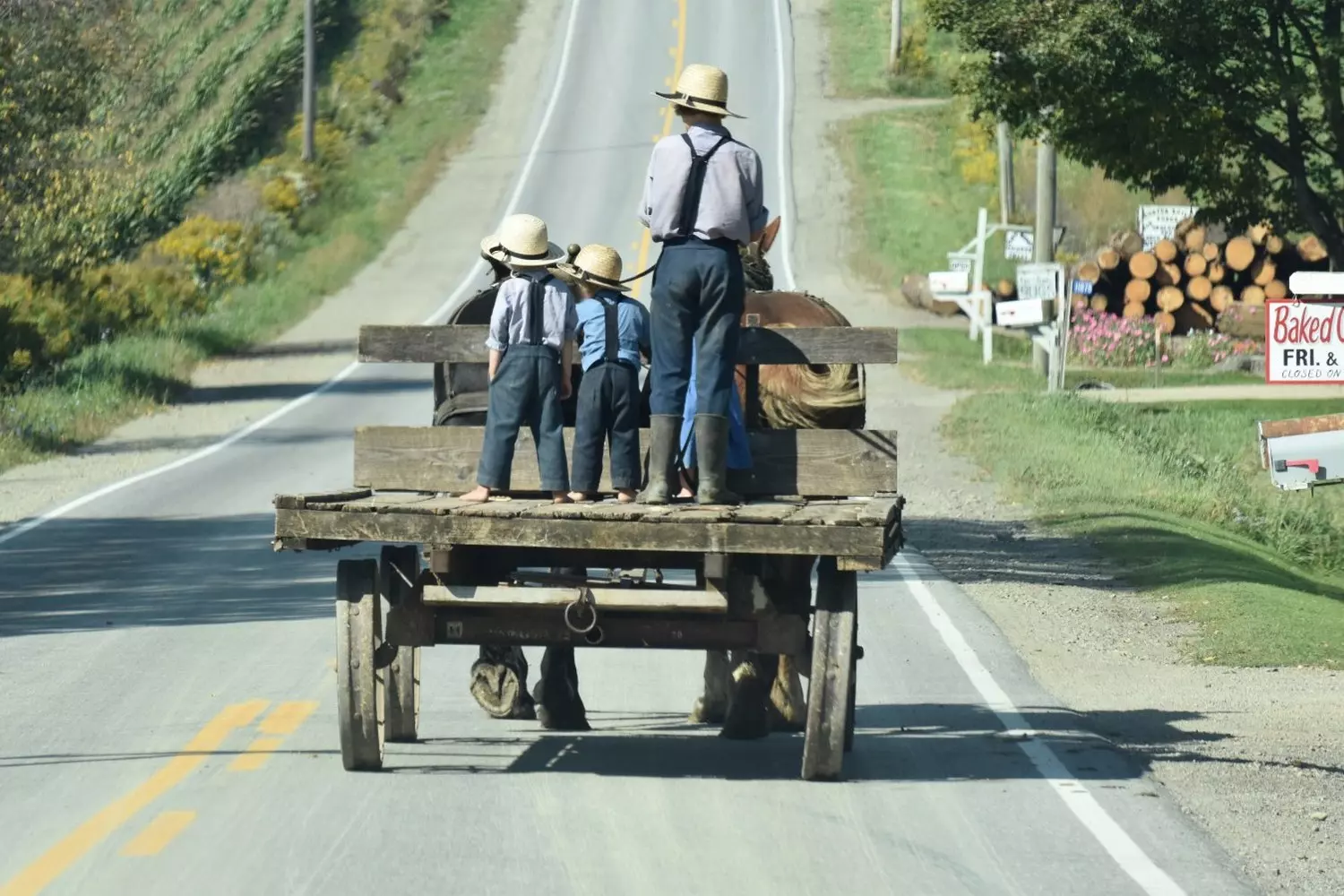
The Core Principles of Amish Life
The life of the Amish seems mysterious and even intriguingly conservative to many. But behind this outward facade lies a deep system of rules and traditions called Ordnung. It is not just a set of laws or prohibitions — it is a whole philosophy, a way of life, and a moral compass that defines everything: from the color of clothing to relationships within the community.
Ordnung (translated from German as “order”) is not a written code in books, but rather a tradition passed down orally from generation to generation. Each Amish settlement may have its own nuances in this “code,” but the general essence is the same — maintaining harmony with God, the community, and nature through simplicity and humility. This set of unwritten rules governs almost every aspect of Amish life:
- Clothing
Colors are strictly limited — usually dark, muted shades: black, gray, blue, brown. Bright colors or decorations are considered excessive pride. Women are required to wear head coverings (caps, scarves), and men wear simple shirts, trousers with suspenders, and traditional hats. Every detail is thought out to emphasize modesty and a lack of desire to stand out. - Technology and comfort
The use of electricity at home, phones, televisions, cars — is generally prohibited or strictly limited. Exceptions are technologies that do not affect spiritual life and community values. For example, some communities use generators to power necessary equipment, but without connecting to the general electric grid. - Public behavior
Are mirrors, photographs, and other “Western” attributes allowed? Generally, photographs are rare and sometimes taboo in Amish communities, as they are considered a form of vanity. Mirrors are permitted but used sparingly so as not to encourage self-admiration. - Transportation
Cars are strictly forbidden. Travel is done by horse-drawn buggies or on foot. This is not just a tradition — it symbolizes separation from the “outside” world and rejection of excessive comfort that distracts from spiritual life.
Main principles underlying the Ordnung
- 01. Modesty (Modesty)
It is not just about clothing. Modesty is a life credo, manifested in everything: speech, actions, demeanor. Clothing must be functional and as simple as possible, without decorations, embroidery, or glitter. Women cover their heads to express humility before God, and men wear beards (after marriage) as a sign of maturity and responsibility. - 02. Simplicity (Simplicity)
Rejecting technology and comfort is not a protest against progress but a conscious choice. For the Amish, simplicity is an opportunity to focus on spiritual life, family, and community. The fewer distractions, the easier it is to live in harmony with oneself and with God. - 03. Self-sufficiency (Self-sufficiency)
Most Amish are engaged in agriculture — growing vegetables, fruits, raising livestock, making cheese, woodworking, and sewing. This is not only a way of life but also a principle of survival. Self-sufficiency ensures the community’s stability and reduces dependence on the “outside” world. Many goods are handmade rather than bought ready-made. - 04. Community over individual (Community over Individual)
The most important principle is collectivism. Personal interests and ambitions give way to the needs of the entire community. Decisions are made collectively — at meetings, often by elders and spiritual leaders. Everyone must follow established rules as this maintains unity and order.
Ordnung is not just a set of restrictions but a way to preserve the uniqueness and integrity of the Amish way of life in a rapidly changing world. It is thanks to this rule that they have been able to maintain their identity for hundreds of years.
Ultimately, Amish life is a daily choice in favor of loyalty to one’s beliefs, simplicity, and mutual support. It is a world where traditions become the foundation, and Ordnung is the guiding star.
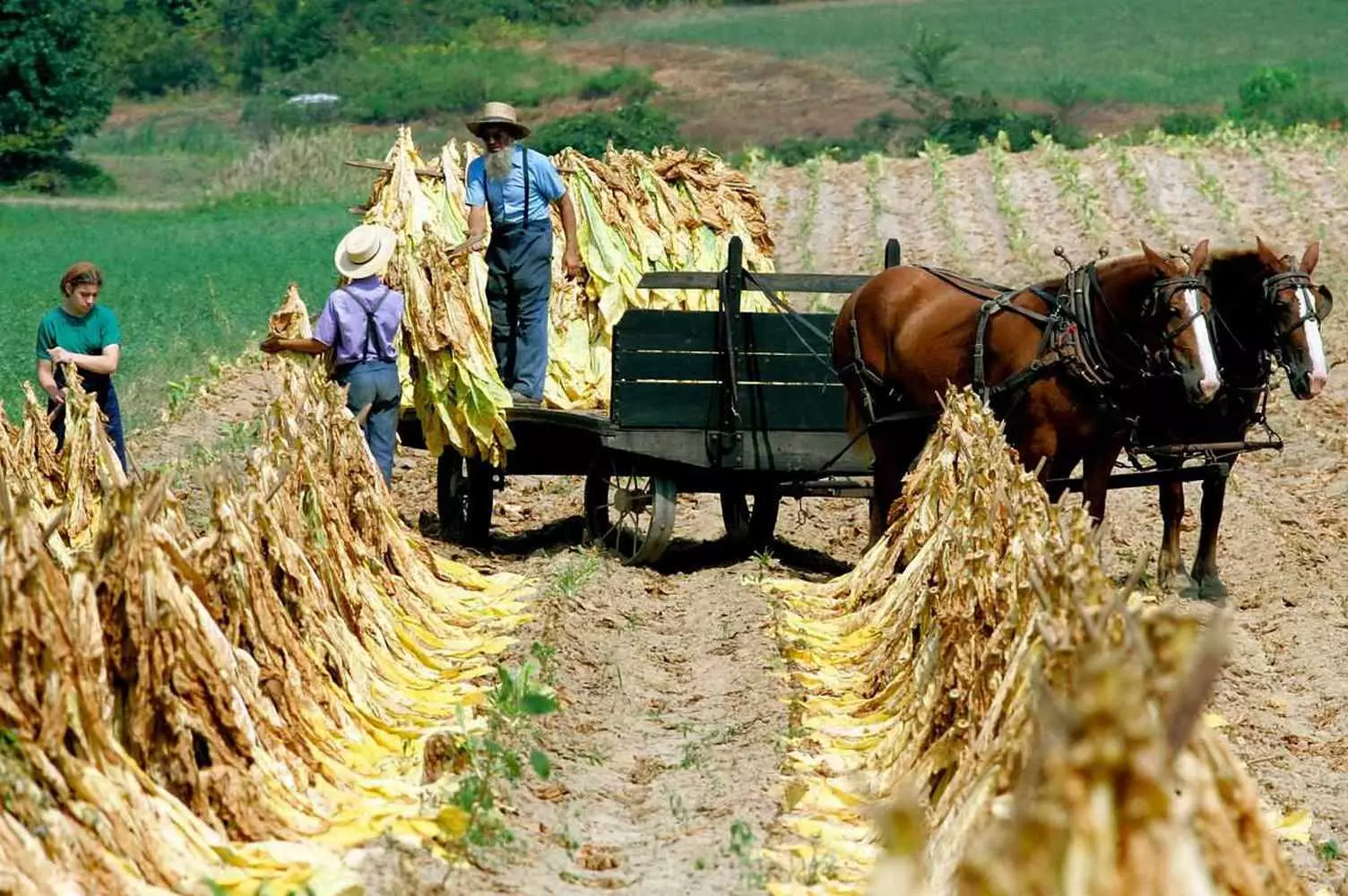
How the Amish Live Today
The life of the Amish is an amazing blend of deep faith, strict traditions, and self-organization. Although their way of life may seem archaic, the Amish live fully and meaningfully, preserving their unique culture in the modern world. Let’s take a closer look at how their daily life is organized today — from family to work and health.
- 01. Family — the center of the Amish world
For the Amish, family is not just a social unit but the foundation of all life and community structure. Traditional Amish families usually have many children — typically from 6 to 10, sometimes even more. This is not accidental but a conscious choice that helps maintain the community’s population and strengthen its future.
- Role of the man
The leader and provider. He performs hard physical labor, supports the family financially, and makes key decisions. - Role of the woman
The keeper of the hearth. She is responsible for raising the children, preparing food, managing the household, and maintaining order in the home.
Family bonds are very strong: divorces among the Amish are practically nonexistent. Conflicts are resolved within the family and the community, with mutual help and support playing an important role. Marital fidelity and mutual respect are the cornerstones of Amish morality.
- 02. Education — brief but fundamental
The Amish prefer limited education focused on practical and spiritual knowledge. Children are taught in their own schools, usually located right within their communities.
- Education ends after the 8th grade, which is enough to acquire basic skills: reading, writing, arithmetic, and, of course, Bible study.
- The educational process is conducted in German (Amish dialect) and English, with a strong emphasis on religious upbringing.
- After finishing school, children actively help with household chores or learn crafts alongside their parents — this is how experience is passed down from generation to generation.
This approach to education helps preserve the traditional way of life and avoid “contamination” by the outside world, which could distract young Amish from their mission.
- 03. Work and crafts: labor as the basis of existence
Work for the Amish is not only a way to provide for themselves and their families but also a part of spiritual discipline. Most often, the Amish are engaged in traditional fields related to agriculture and crafts.
- Farming
The classic Amish lifestyle. Large families grow vegetables, fruits, raise livestock and poultry, using minimal technology. - Bakeries and food production
The Amish are famous for their natural and delicious products, many of which are sold beyond their communities. - Furniture making
A craft in which the Amish particularly excel. Their furniture is renowned in the US for its highest quality and durability, as it is handmade with great attention to detail. - Construction and carpentry
Another area where the Amish demonstrate skill and diligence.
Interestingly, Amish often run family businesses where everyone participates in the work process — from children to elders.
- 04. Health and medicine: balancing tradition and reality
When it comes to health, the Amish follow their own special approach. They hardly use state or commercial insurance programs, preferring to be treated by trusted doctors whom they see directly and pay in cash.
- Many Amish practice folk medicine — herbal treatments, massages, homemade decoctions, and compresses. These methods are passed down through generations and highly respected.
- At the same time, refusal of modern vaccinations is a controversial topic, but despite this, the health level in Amish communities is often above average. This is related to an active lifestyle, natural diet, and strong family ties that create a supportive environment.
Studies have shown that Amish communities, despite lacking modern technologies, experience one of the lowest rates of cardiovascular disease mortality in the country. This is linked to physical activity and the absence of stress that often accompanies modern life.
Today, Amish life is a fusion of centuries-old traditions and practical common sense. They preserve their unique culture, living in harmony with nature and faith, demonstrating to the world that it is possible to be happy by giving up all things ultra-modern.
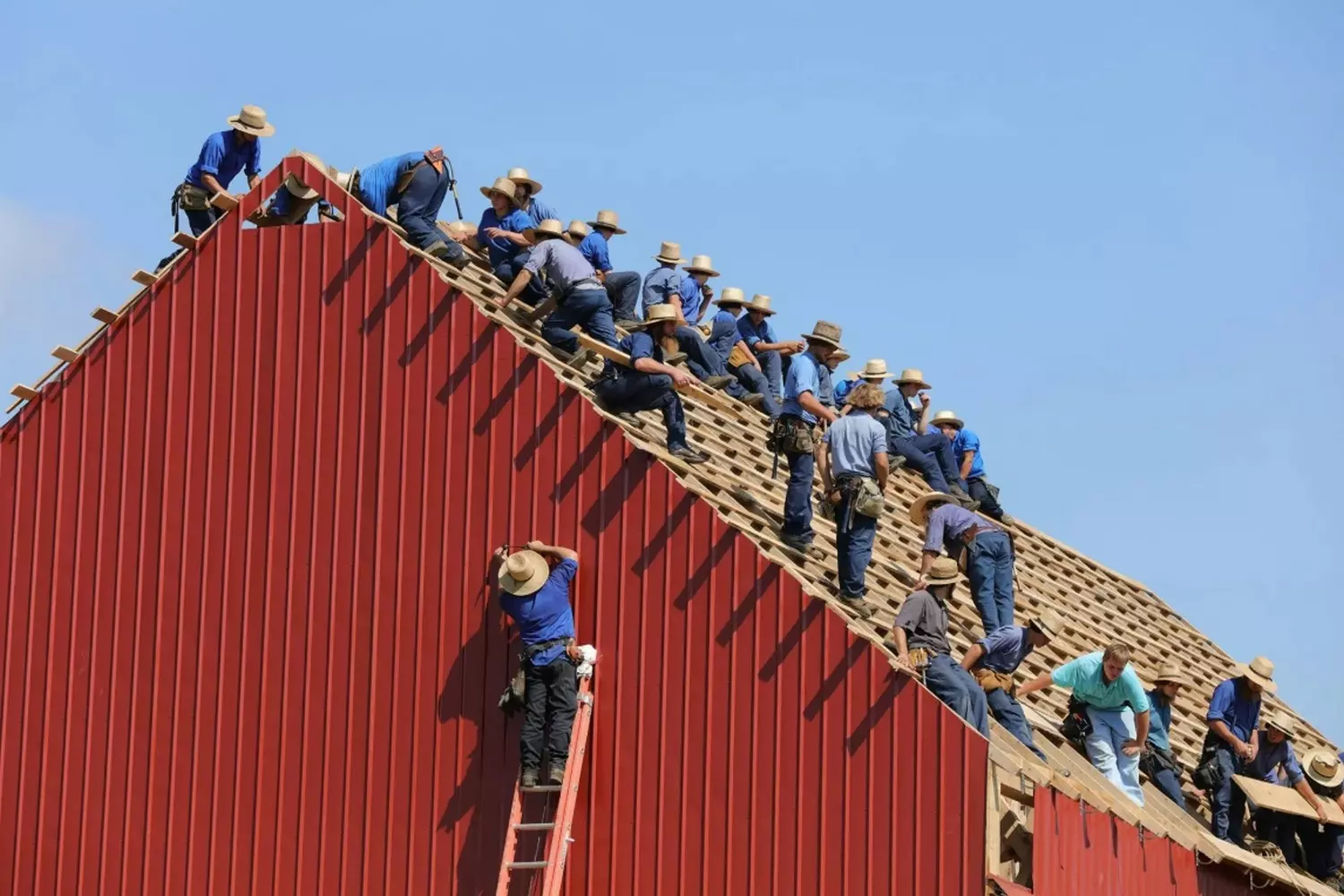
Where the Amish Live, Whether You Can Visit Them, and How They Earn Their Living
The Amish are one of the most well-known and mysterious religious communities in the United States. Their way of life, radically different from the modern world, sparks interest and curiosity among many. But where exactly do they live, is it possible to get to know them up close, and how do they sustain themselves? Let me explain in detail and truly engagingly.
Today, the majority of Amish people live in specific areas of the U.S., which have become something like "oases" of traditional lifestyle. The main Amish centers are located in the following states:
- Pennsylvania, Lancaster County — about 90,000 people
This is home to one of the oldest and largest Amish communities. Lancaster is often called the "heart of Amish America." Tens of thousands of Amish live here, and the area is very popular among tourists. - Ohio, Holmes County — about 85,000
Another large community attracting ethnography enthusiasts and those who appreciate simplicity. Holmes County is considered one of the most conservative regions, where the Amish live according to their strictest rules. - Indiana, Elkhart — about 60,000
The third largest Amish region, known for its active community life and craftsmanship skills.
Wisconsin — more than 25,000, Missouri — over 18,000, with smaller communities also present in Kentucky, New York, Illinois, Iowa, and even in Canada (Ontario) and South America — in Bolivia, Argentina, and Paraguay. However, most prefer to remain in the U.S., where their communities have long been established.
Is it possible to visit the Amish and what do tours look like?
Getting inside an Amish community is not an easy task. The Amish are very cautious towards the outside world and strictly observe principles of seclusion and modesty. Therefore, there is no free access to their homes and farms.
But tourists can visit the surroundings and see the Amish in their natural environment:
- Excursions and tours
In the Lancaster, Holmes County, and Elkhart areas, you can view Amish life from the outside. Guides tell the history, traditions, and everyday life of the Amish. - Souvenir shops and craft workshops
One of the few places where you can interact with the Amish, purchase handmade goods — from handicrafts to homemade baked goods. - Horse-drawn carriage rides
A popular activity for tourists that allows you to feel the atmosphere of simplicity and unhurried Amish life.
Some Amish farms and homes open their doors to guests, especially if it brings income and does not disrupt the community’s way of life. Such visits require prior arrangement and respectful behavior.
How do the Amish earn their living: traditions and modernity
The economic activity of the Amish is built around their core values — simplicity, work, and self-sufficiency. Here are their main sources of income:
- Agriculture
The majority of Amish are engaged in farming and animal husbandry, growing vegetables, fruits, grains, and raising livestock. Farm products are often sold at markets or directly to customers. - Crafts and manufacturing
Amish-made furniture is known as some of the best in the U.S., distinguished by durability, simplicity, and top-quality handmade workmanship. Besides furniture, they produce textiles, baskets, candles, and other goods. - Bakeries and food shops
Homemade baked goods and preserves are popular among locals and tourists alike. The Amish uphold traditions of natural and healthy nutrition. - Construction and small business
Many Amish own small construction firms providing services in rural areas. They often cooperate with the outside world but strictly separate business and home life.
It is important to note that the Amish use modern technologies only when it does not violate their lifestyle and helps in work. For example, they may use generators on farms or motorized tools — but never in the household.
The Amish are known for having one of the lowest crime rates in the U.S. Their communities practically have no police, and life is regulated by internal norms — morality, religious discipline, and mutual respect. Conflicts are resolved within the community, and violence is minimal.
This serves as a vivid example of how cohesion and shared values can create a safe and harmonious society.
The Amish live in special areas, preserving their traditional way of life and avoiding excessive contact with the modern world. Although it is difficult to enter their homes, tourists can observe their lives from the outside and even participate in some activities. The Amish earn their living through traditional labor — farming, crafts, and family businesses — and thus support their community. Their world may seem strange to us, but it allows them to maintain integrity and faith in a turbulent modern world.

Attitude Towards the Outside World
The Amish are a community that has consciously chosen a path of seclusion and preservation of traditions, remaining almost untouched by modern trends. However, this does not mean they live in complete isolation or disregard interaction with the outside world. Their attitude toward people beyond the community is interesting and multifaceted, and it deserves a closer look.
- 01. Respect for Their Own Boundaries
The main principle of the Amish is to live in a way that does not violate the foundations of their religion and community. They do not seek to "convert" anyone from outside. The Amish do not engage in aggressive missionary work, do not participate in preaching, and do not try to impose their beliefs.
Their attitude toward the outside world can be described as neutral and cautious. Interference in their way of life is taboo. Often, the Amish view modern society as a potential threat to their values: technology, hustle, and individualism contradict their ideals of communal living, humility, and simplicity. - 02. Politeness and Hospitality
Despite the distance, the Amish are very polite and courteous toward outsiders. Their upbringing and religious norms require them to show respect to every person, whether a neighbor or a tourist. If you meet an Amish person at a market, souvenir shop, or village, they are likely to be friendly and open to a brief conversation.
Hospitality is an important element of Amish culture. Although inviting a stranger into their home without a valid reason is extremely rare, the Amish do not refuse kind words, smiles, and help when it is appropriate and does not violate their rules. - 03. Economic Interaction with the Outside World
Most Amish live in conditions that require interaction with the outside society — whether selling products, purchasing necessary goods, or providing services. At the same time, they clearly separate the "outside" from the "inside":
- Work with the Outside World
Many Amish build houses, repair buildings, and engage in agriculture, the products of which are sold at regular markets and fairs. These contacts are pragmatic — through them, the community earns a living. - Sale of Handcrafted Goods
Amish handmade products — furniture, baskets, textiles — are in high demand among tourists and collectors. This allows the community to earn income while preserving traditional skills. - Services and Entertainment for Tourists
In popular Amish regions, horse-drawn carriage rides, tours, and local cuisine tastings are organized. This is an example of how the Amish carefully use opportunities from the outside world without losing their identity.
Although the Amish consciously limit contact with modern civilization, they understand the importance of minimal interaction to maintain their standard of living and community development. They choose what exactly and to what extent to accept from the outside world in order to preserve their spirituality and traditions.
Maintaining distance helps them protect their culture, but openness to cooperation and economic activity demonstrates flexibility and pragmatism that make the community resilient in the 21st century.
The Amish attitude toward the outside world is a delicate balance between preserving traditions and the need to maintain ties with modern society. They do not impose their faith nor seek complete isolation, but they also do not allow the outside world to penetrate their lives more than necessary. Politeness, hospitality, and pragmatism are the key traits of their interaction with others. It is thanks to this that the Amish have successfully preserved their unique way of life for centuries.
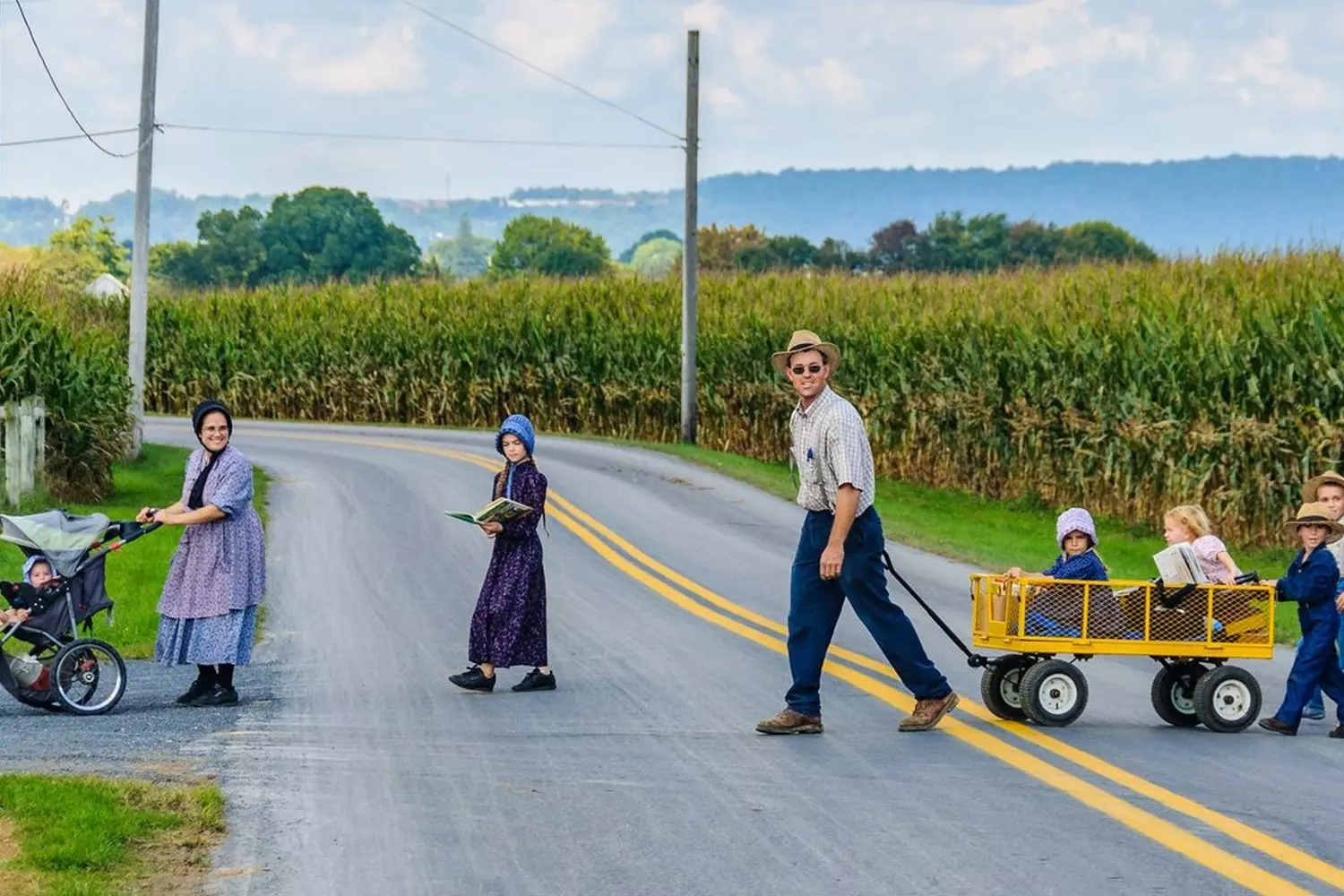
Scientology: Salvation or Scam?
Rumspringa: The Choice of Destiny
For many Amish, the transition from childhood to adulthood is accompanied by a special rite called rumspringa — literally a "jump" or "running around." This unique phenomenon is rarely found in other religious or traditional communities and is key to understanding the depth of young Amish people’s connection to their community and faith.
When an Amish boy or girl turns about 16 years old, the period of rumspringa begins. This is a time when teenagers are given the opportunity to temporarily leave the strict boundaries of communal life and explore the outside world, which is usually closed to them.
During this period, young people:
- Try modern technologies: smartphones, cars, social media;
- May attend clubs, parties, and places where young people gather;
- Make decisions that are strictly forbidden in normal Amish life.
For them, it is a kind of "test of maturity" and a chance to consciously choose their path — whether to become continuers of their family and community traditions or to leave for the "worldly" life.
Rumspringa — Freedom or Trial?
Rumspringa is not just an opportunity to have fun and try new things. It is a period of deep reflection and choice. Despite the Amish being very limited in contacts with the outside world, this stage helps young people understand whether they are ready to accept the full scope of Amish life — with its restrictions and rules.
For most teenagers, this time is accompanied by:
- A clash of two worlds: the bright, free, but sometimes chaotic "outside" and the measured but strict inside;
- A search for themselves and their place in life;
- The realization that life in the community is not just a habit, but a conscious choice.
The statistics are impressive: about 80–90% of teenagers return to the community and undergo baptism, which symbolizes full acceptance of the Amish faith and way of life. This speaks to the depth of upbringing and the strength of communal values.
The reasons most return include:
- Strong family ties and spiritual support;
- A sense of belonging and security within the community;
- The understanding that Amish life is not only about restrictions but also a unique culture where simplicity, honesty, and mutual help are important.
Nevertheless, some young people decide to remain in the "worldly" life. For them, rumspringa is an opportunity to make a conscious choice and follow their own path without pressure or judgment.
Some researchers note that in recent decades, rumspringa has become somewhat "softer." In some communities, young people are allowed to choose how long their period of trial lasts — from several months to several years. This reflects the community’s efforts to adapt to modern realities while preserving their fundamental traditions.
Rumspringa is more than just a "period of rebellion" or "teenage experiments." It is a sacred moment of choice when young Amish decide what their future will be — continuers of centuries-old traditions or part of the modern world. This rite shows how strong the spiritual connection is and why the Amish remain one of the most unique cultures in the modern world.

Amish in Culture: Reflecting Simplicity in the Modern World
The Amish are one of the most mysterious and unique cultural groups in the United States. Their lifestyle and philosophy often evoke genuine interest among the general public, inspiring writers, filmmakers, photographers, and anthropologists. In this section, we will take a detailed look at how the Amish are represented in popular culture, the role they play in art, and why their world remains captivating for researchers and travelers.
- 01. The Amish in Film and Literature: Between Romance and Stereotypes
Films and books about the Amish usually revolve around the contrast between their authentic, traditional way of life and the rapidly changing world of the "outside." Some works convey the depth of their faith and values, while others simplify the image, creating stereotypes. Here are some key points:
- Cinema
The popular film Witness (1985) starring Harrison Ford was one of the first to portray the Amish with respect, focusing on their community life and traditions. However, many other films simplify the image, showing the Amish solely as "people from the past" or exotic "recluses." - Literature
Authors often depict the Amish through the lens of romance and nostalgia for "simpler times." At the same time, serious studies emphasize the complexity of their social organization and spiritual discipline. - TV Series and Documentaries
Contemporary projects, such as the series Amish Mafia or documentary films, attempt to reveal real aspects of Amish life, although they are sometimes criticized for sensationalism.
- 02. Photography and Visual Arts: Captured Moments
Visual art is one of the main ways to get acquainted with the Amish world. The restriction on photography within the community does not stop artists and photojournalists who strive to show their life with respect and attention to detail:
- Photographers seek natural shots that convey the silence and measured pace of their daily life — modest homes, horse-drawn buggies, work in the fields.
- The renowned photographer Robert Adams dedicated part of his career to photographing traditional rural communities, including the Amish, emphasizing the beauty of simplicity and harmony with nature.
- 03. The Amish in Art and Music: Traditions Living for Centuries
The Amish do not enjoy widespread popularity in commercial music or visual arts, but they have their own cultural traditions passed down from generation to generation:
- Singing hymns and religious chants is an important part of community life, helping maintain spiritual connection and a sense of unity.
- Craftsmanship and furniture making are not only business but also an art form. Their furniture is renowned for its durability and elegance, while embroidery and quilts are examples of exquisite craftsmanship.
Although the Amish avoid technology and mass culture, their way of life inspires many modern people to rethink their values:
- Movements for sustainable development and conscious consumption often refer to the Amish as an example of simplicity and respect for nature.
- In an era of digital overload and stress, many seek ways to escape constant noise — and the Amish philosophy of "slow living" seems appealing.
Interestingly, many celebrities show interest in Amish culture. For example, actress Rachel McAdams participated in filming a movie about Amish life, and director Terrence Malick has admitted finding inspiration in their culture for his works related to nature and spirituality.
The Amish are a living cultural phenomenon that continues to attract attention and admiration. Their lifestyle and philosophy of simplicity, modesty, and community support resonate in a modern world full of speed and technology. Immersion in their culture helps better understand what it truly means to be free — free from hustle, pressure, and excess.

Why the Amish Matter to America
The Amish are not just a religious minority but a significant and unique part of the cultural and historical landscape of the United States. Their role goes far beyond closed communities and old-fashioned buggies: they remind modern society of the deep values of freedom, self-sufficiency, and respect for tradition. Let’s take a closer look at why the Amish are important for America today.
- 01. A symbol of religious freedom and cultural diversity
The history of the USA is closely tied to the migration of people seeking refuge and the opportunity to live according to their beliefs. The Amish are a living example of how it is possible to preserve and develop a unique religious and cultural identity within a democratic society.
- Their existence confirms that America is a country where peaceful coexistence of very different views and ways of life is possible.
- The Amish emphasize the importance of the right to choose one’s own path, showing that freedom of religion and cultural autonomy are not empty words but foundational principles of the country.
- 02. A contrast and mirror for modern civilization
In a world moving ever faster, where technology dictates lifestyles and forces constant rushing, the Amish live differently. Their world is a slow flow of time, the value of each moment, and respect for nature.
- For many Americans and visitors to the country, the Amish become a symbol of an alternative to the “fast life”: an opportunity to reflect on simplicity, humility, and true values.
- In conditions of constant informational noise and technological dependence, the Amish community reminds us of the importance of balance, inner peace, and connection with the earth.
- 03. Economic and ecological contribution
The Amish are active participants in the US economy, especially in agriculture and crafts. Their approach to production is characterized by responsibility and high quality.
- Their farm products are known for being environmentally clean — without the use of chemicals and industrial fertilizers. In an era of growing interest in organic food, this is becoming increasingly in demand.
- Amish furniture and crafts are famous for durability and craftsmanship. These goods are valued not only for quality but also for genuine love for the work.
- Despite rejecting modern technology, the Amish successfully adapt to market conditions while preserving their principles.
- 04. A social example of community and mutual aid
The Amish community is a model of social solidarity, where everyone supports one another, and the common good is paramount.
- In modern society, where individualism and alienation are growing, the Amish show how to build trusting relationships and collective decision-making.
- Their life without police and almost no crime is proof of the strength of moral foundations and internal control.
- 05. Cultural and tourist richness
The Amish attract many tourists, ethnography enthusiasts, and those interested in life outside modern civilization.
- Tourism related to visiting Amish areas supports the local economy and helps preserve cultural heritage.
- Through souvenir shops, farmers’ markets, and tours, the Amish share their unique experience with the outside world while simultaneously strengthening their own identity.
The Amish are an important and respected part of America, embodying ideals of freedom of choice, respect for tradition, and living in harmony with nature. Their example prompts modern society to reflect on what true wealth really is — not just technology and speed, but simplicity, responsibility, and community support.
In this sense, the Amish are not simply an isolated religious minority but a living, breathing part of American culture that helps the country remain diverse and profound.
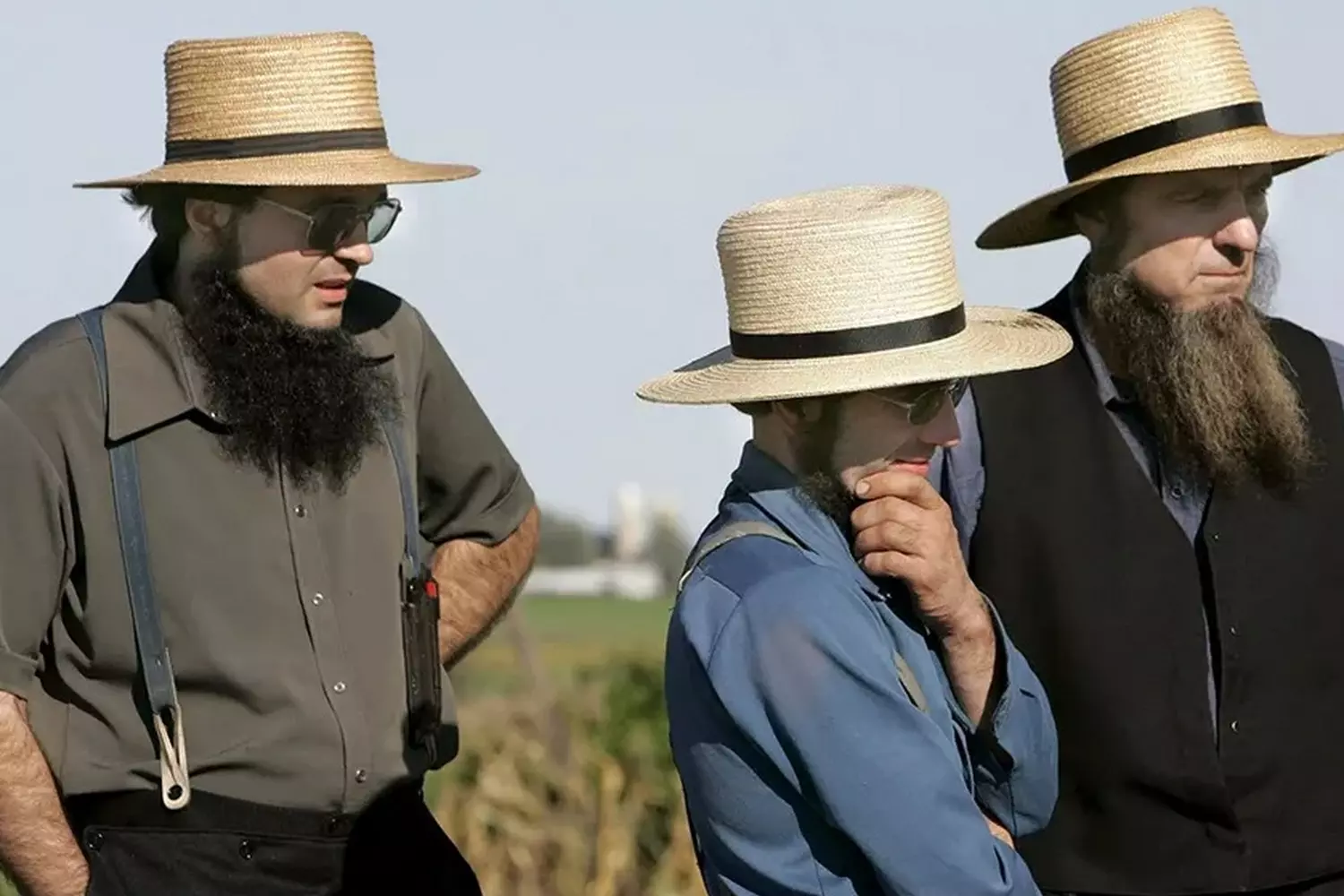
Amazing Facts About People Who Live Like It’s the 19th Century
The Amish are one of the most closed and mysterious religious communities in the world. They have voluntarily given up the comforts of civilization, living without electricity, cars, or the internet, yet their community thrives. What secrets does their way of life hold? Here are some unusual facts about the Amish that will surprise you!
- 01. They’re not against technology — they’re against its influence
The Amish don’t reject all technology outright; they carefully choose what doesn’t threaten their community. For example, some use gasoline engines for farming but forbid phones to preserve personal communication. - 02. They have no social media, but they do have "IT helpers"
Although the Amish don’t use the internet, some hire “computer assistants” — non-Amish people who run their online businesses (like selling furniture or food products) for them. - 03. They pay taxes but don’t receive social security benefits
The Amish are exempt from U.S. social insurance because they care for their elderly themselves. Their community supports the elderly, sick, and disabled without government aid. - 04. Their weddings have no rings or honeymoons
Amish marriages are very modest: no wedding rings, no extravagant outfits, and no travel. After the wedding, the couple immediately starts working. - 05. They grow some of the best farmers in the U.S.
Without chemicals or modern machinery, the Amish achieve record harvests. Their farming methods are now studied even by agronomists! - 06. They have "hidden" technologies
Although the Amish officially reject electricity, some communities use… pneumatics! For example, compressed air from diesel generators is piped to power sewing machines or drills. - 07. They make super-durable umbrellas
The Amish hand-sew umbrellas from heavy fabric with wooden ribs. They withstand hurricane winds and last for decades — unlike plastic ones from China. - 08. Their teenagers sometimes stage "iPhone rebellions"
During “Rumspringa” (a period of freedom), some Amish teens not only try alcohol but secretly buy smartphones. Then their parents find the phones and… smash them with a hammer. - 09. They don’t have house keys
Many Amish don’t lock their doors — theft is almost unheard of in their community. If they need to leave, they just leave a note: “Back tonight, milk in the cellar.” - 10. They use “forbidden” pills for treatment
Although the Amish are against modern medicine, in critical cases they secretly take antibiotics. But only if the doctor convinces them it is “not chemistry, but God’s help.” - 11. They grow “elite” organic products
Amish farms supply milk and vegetables to upscale restaurants in New York. Chefs appreciate their produce for its taste — free from pesticides and GMOs. - 12. Their horses live better than some people
The Amish care for their horses tenderly: they oil their hooves, feed them select oats, and even give massages. The average lifespan of their horses is 25 years (compared to the usual 15–20). - 13. They have “secret” refrigerators
Some Amish communities use… propane refrigerators! They work without electricity, cooling food with gas. This doesn’t break their principles but looks like a clever trick. - 14. Their children play with “forbidden” toys
Though the Amish oppose modern entertainment, their children sometimes make rag dolls that surprisingly resemble Barbies. Parents turn a blind eye — as long as there are no factory-made toys. - 15. They secretly use solar panels
In some communities, solar panels can be seen — but only for farm or workshop use. They don’t bring them into houses to avoid breaking traditions. - 16. Their women invented a 19th-century “superfood”
Amish homemakers make a unique “energy bread” from sprouted wheat, honey, and dried fruits. It keeps for months and provides energy for the whole day. - 17. They can ride trains... but not cars
The Amish consider trains “public transport,” so they sometimes use them. But cars are forbidden — they symbolize personal luxury. - 18. They have their own “identity”
You can tell which Amish community someone belongs to by their beard and hat. For example, some groups wear only black hats, others wear straw ones. - 19. They build houses in one day
The Amish practice “barn-raising”: when a family needs a new home, the entire community gathers and builds it within a day. - 20. Their women sew “indestructible” shoes
Amish shoemakers make boots with triple soles that last 10-15 years. Even farmers from the “outside world” buy them.
The Amish prove that you can live without gadgets yet remain in harmony with nature and family. Their traditions challenge the modern world, where everything changes every five years. The Amish are not just a "museum exhibit" of the past. They skillfully balance tradition and necessity, creating an amazing hybrid of old and new. Perhaps that is the secret of their survival?
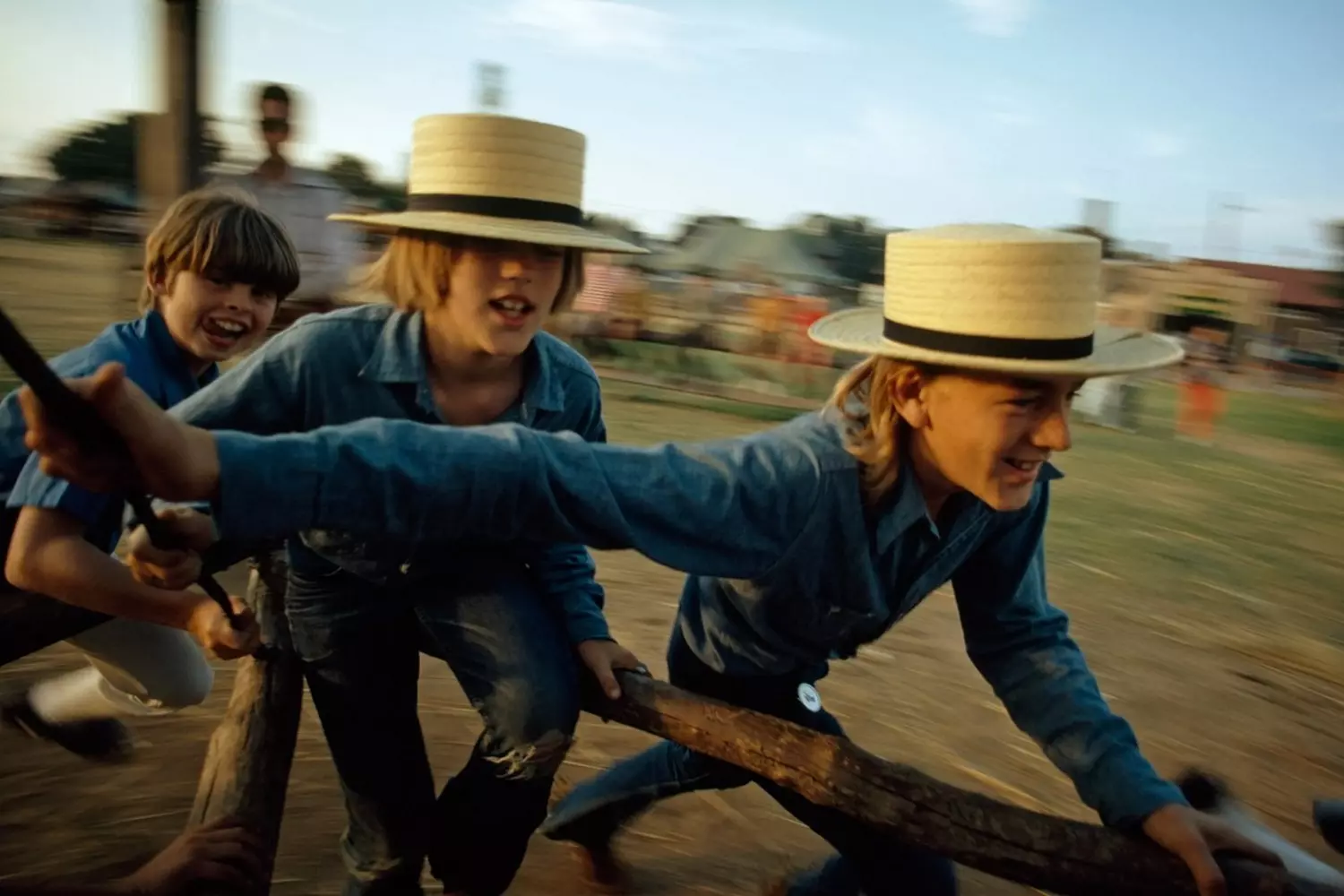
Want to see how the Amish live? It’s possible with American Butler
The life of the Amish may seem strange, outdated, and archaic. But there is logic in it — it is a conscious choice. The Amish are not running away from civilization; they have simply decided that it does not make them better. In a world where everything changes too quickly, their resilience stands as a challenge and a reminder: sometimes silence, simplicity, and connection with nature give more than all technologies combined.
If you want to see this with your own eyes — to feel what it’s like to live without a smartphone, internet, and hurry — you can take a tour to the Amish lands.
We organize personalized tours to Pennsylvania, Indiana, or Ohio — places where life goes on quietly, without the noise of big cities. You will be able to:
- Ride in a horse-drawn buggy
- Try homemade pie
- Talk with local artisans
- Visit a traditional Amish home
This is not just a tour — it is an experience that changes your perspective on the world.



































